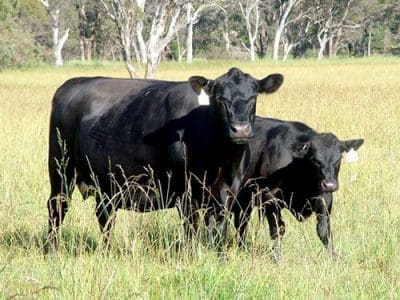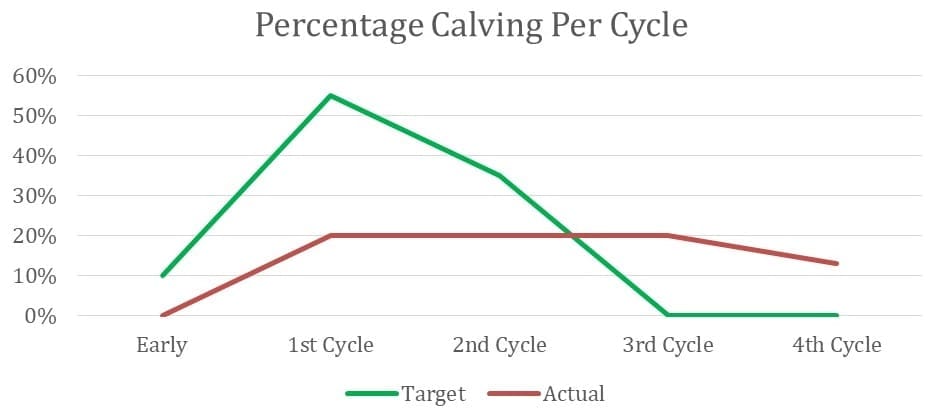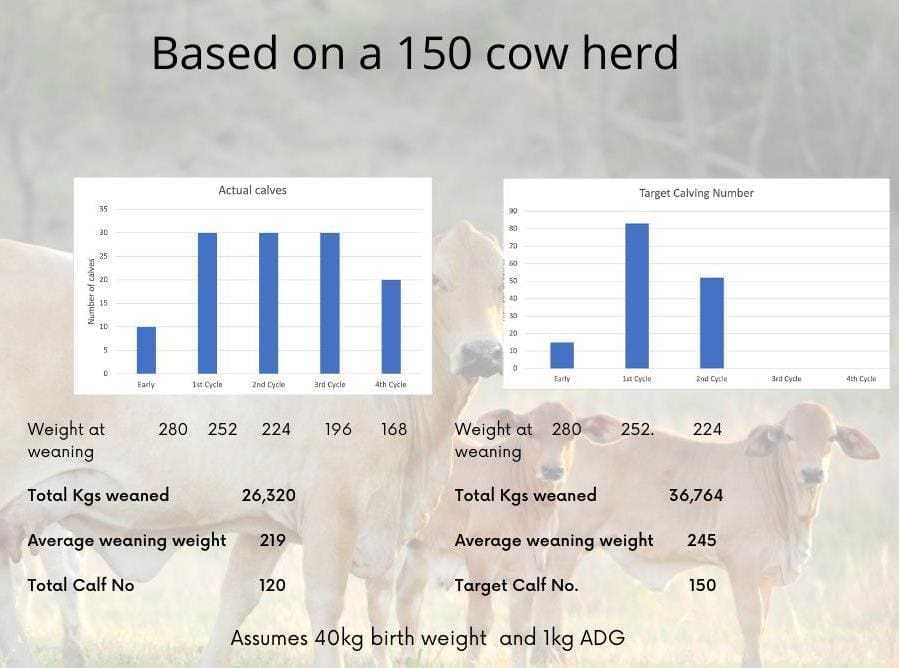There’s been strong reader comment response to last week’s genetics item discussing advantages of a shorter gestation length (click here to view). Here’s a second item from genetics editor Alastair Rayner on the cost of an extended calving period and other related topics….
HERD fertility plays a significant role in determining the profitability of breeding herds. Reader responses to last week’s column focussed on potential risks associated with lighter birth weights. These responses range from concerns around calf survival, though to an impact on mature cow size.
It is important to recognise that selection for fertility traits is one part of the overall approach to improving fertility. In practical terms, a shorter gestation length will result in slightly lighter calves at birth.
 There has been significant international and national research conducted on the impact birth weight has on dystocia and calf survival. Research from Iowa University in the US indicates that the odds of dystocia increase by 13pc for every additional kilogram of birth weight.
There has been significant international and national research conducted on the impact birth weight has on dystocia and calf survival. Research from Iowa University in the US indicates that the odds of dystocia increase by 13pc for every additional kilogram of birth weight.
In the case of Gestation Length, it is important to remember that 282 days is the average for cattle. Given that this is an average figure, there will be those animals that have a genetic predisposition to calve earlier, and there will equally be those which take several days longer than average. This increases the risk of dystocia, impacting on both calf survival and survival of the dam.
The Calf Alive Symposium held in Queensland in 2017 presented some significant take-home messages on this for producers – specifically on the issue around post calving survival.
The key messages from the symposium included the fact that Dystocia – difficulties calving – has a large impact on calf survival. As part of the seminar, Dr Tom Kasari highlighted the impact cow condition, and the level of nutrition has on calves’ post calving.
“A thin cow begets a weak calf. Nutrition is the last trimester is critical for both the cow and the calf’s subsequent survival,” he said.
In general, nutrition has a greater impact on calf survival than the risk of lighter birth weights may have. This is reinforced by Australian research conducted in Victoria during the late 1970s. This demonstrated that cows on a very low level of nutrition, compared to cows on a high plane of nutrition prior to calving had:
- An increase in still births
- The time taken to calve doubled
- Calves took longer to stand after calving. The increase extended from about 1⁄2 hour to 4 hours, while the cows also took longer to stand after birth
- It was also observed the time to first suckling increased from about 1.5 hrs to 5 hours
The research also identified that calves which did survive dystocia and were born to cows on low nutrition were 2.4 times more likely to die within 45 days of birth.
As producers seek to find options to improve their herd fertility, these are findings that shouldn’t be overlooked. Lighter birthweights and improved calving ease offer more advantages to long term survival and in turn combine to increase weaning rates.
It’s also worth focusing on the financial impact that is incurred through calving. For many producers, the focus is often restricted to the major benchmarks of conception rate, calving percentage, and weaning rate. These are important points of reference for any herd, and are strongly influential towards overall profitability.
Managing these benchmarks is often a combination of strategic decisions around nutrition and cow condition. Genetic selection, which includes considering EBVs for Gestation Length and Days to Calving as well as the fertility EBVs of Birth Weight and Calving ease are longer term strategies for improvement across the herd.
While these broader benchmarks are relatively straightforward to cost, there are also additional costs hidden in calving. A significant cost is incurred through the extension of calving beyond a 12-week period.

Using a simple calving histogram to compare expected calving numbers against actuals, the impact that longer calving has on a herd’s productivity becomes fairly striking. In most cases lower body condition as well as lower energy intake restricts the ability of cows to return earlier to oestrus. However, genetics can also influences this time, both through days to calving and gestation length.
Using this graph as an example, a longer calving period – over 12 weeks may result in the majority of the herd calving later and slipping further towards the end of the window for a 12 month calving interval. When measured as calves actually born, the impact of the time difference in calving is more noticeable.
Based on a 150-cow herd with 80pc weaning, this graph can be used to predict the number of calves actually born over the 12-week period. The difference in expected calf numbers is one direct cost, however a more subtle cost is that of weight lost over the time period.
Calves born at the start of the calving period have a greater opportunity to grow and using an average daily gain of 0.9kg day would see the earlier born calves weigh on average 75kg more than the calves born in the last week. This weight differential is carried through to weaning. As can be seen in the chart below comparing an extended calving against a shorter program.

The extension of calving, as a result of cows conceiving in their third cycle and beyond results in a significant weight loss by the time of weaning. This calf creep can become very costly.
The difference on EYCI values places the average weaner at 219kg as worth $2198 (EYCI 1004c), compared to weaners from shorter programs at 245kg or $2459. The difference of $261.80 on weight across the herd accumulates significantly. Even before looking to increase weaning rate from 80pc there is a gross difference in value in this example of $31,320.
For most beef businesses the opportunity to improve fertility should be seen as a priority. Reducing the length of calving, as well as focusing on other factors such as reducing calf loss through dystocia as well as addressing issues around poor maternal performance will result in a financial improvement.
Alastair Rayner is the Principal of RaynerAg, an agricultural advisory service based in NSW. RaynerAg is affiliated with BJA Stock & Station Agents. He regularly lists and sell cattle for clients as well attending bull sales to support client purchases. Alastair provides pre-sale selections and classifications for seedstock producers in NSW, Qld, and Victoria. He can be contacted here or through his website www.raynerag.com.au



Agree with you Alastair. I have found that having a 7 week joining period and culling anything that doesn’t get in calf or doesn’t wean a calf, is an easy way to select for fertility with ones females.
Buy bulls from herds have the same selection criteria and then look at the EBVs.
There are other economic advantages to having a short calving period; eg more even sale lines, less labor required, better grazing management, higher weaning percentage (eg in the south 95% +)
Alastair, the EYCI is a Carcase weight indicator. While I agree with the argument for controlled joining periods, it is very important to use the correct measurements. That has essentially doubled the economic benefits of shorter joinings.
Thanks for your comment, Tim. That is correct, however the EYCI is a useful indicator to reference. The economics of a shorter joining are still the same even if the value was assigned to another market indicator that has relevance to an individuals particular business. As with all these articles, readers need to consider how this best applies in their location and within the framework of their business and breeding objectives. Alastair